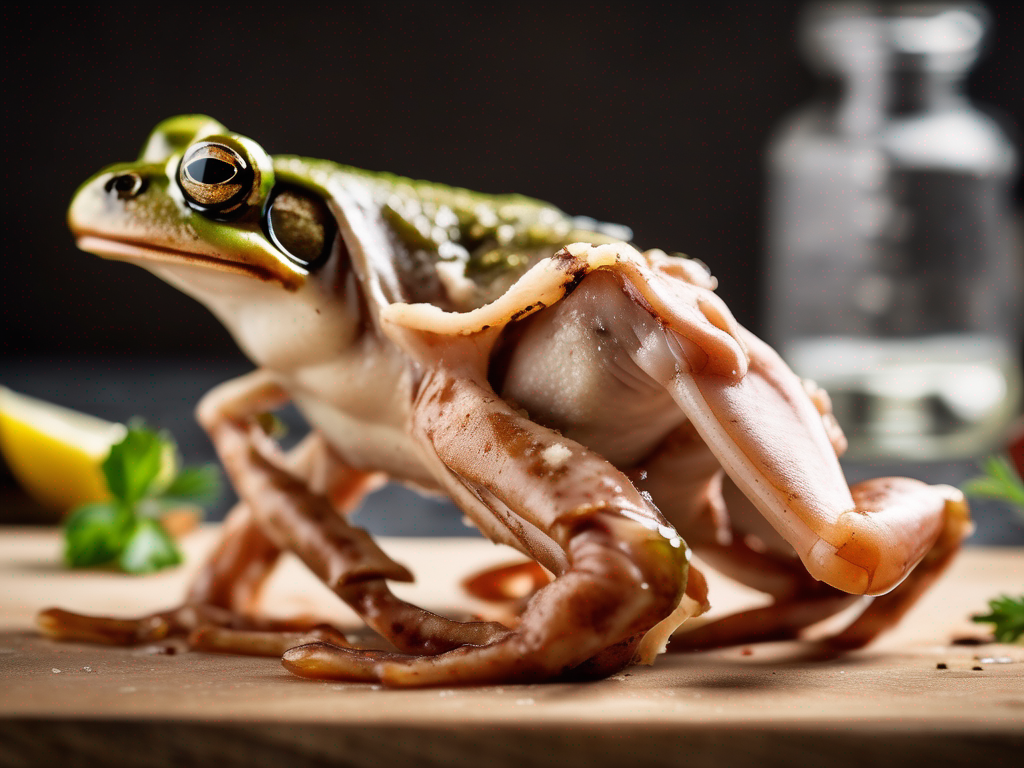
Is Your Frog Legs Fresh Raw Still Safe to Eat?
Get Your Free Food Safety Cheat Sheet
30 most common foods with instant answers. Print it and stick it on your fridge—completely free!
Is Your Frog Legs Fresh Raw Still Safe to Eat?
When it comes to consuming frog legs, freshness is key to ensuring food safety and enjoying the best flavor. Whether you're a seasoned frog legs enthusiast or trying them for the first time, it's essential to know how to determine if your frog legs are still safe to eat. In this blog post, we'll explore practical tips and safety information to help you make an informed decision about the freshness of your frog legs. (Frog legs fresh raw)
Understanding Freshness in Frog Legs
Frog legs are a delicacy enjoyed in various cuisines around the world. When it comes to determining the freshness of frog legs, there are a few key indicators to consider:
Smell
- Fresh Frog Legs: Should have a mild, clean scent reminiscent of the sea.
- Spoiled Frog Legs: Emit a strong, fishy odor or smell sour.
Appearance
- Fresh Frog Legs: Should have a translucent, slightly shiny appearance with a light pink or white color.
- Spoiled Frog Legs: May appear discolored, slimy, or have a dull appearance.
Texture
- Fresh Frog Legs: Should feel firm and slightly springy to the touch.
- Spoiled Frog Legs: May feel slimy, mushy, or overly soft.
Tips for Determining Freshness
To ensure the frog legs you're about to prepare are safe to eat, consider the following tips:
-
Check the Expiration Date: If purchased from a store, check the expiration date on the packaging.
-
Inspect the Packaging: Look for any signs of damage, leaks, or bloating in the packaging.
-
Perform the Smell Test: Give the frog legs a sniff to detect any off-putting odors.
-
Examine the Appearance: Assess the color, texture, and overall appearance of the frog legs.
-
Trust Your Instincts: If something feels off or doesn't seem right, it's better to err on the side of caution and discard the frog legs.
Storing Frog Legs Properly
Proper storage is crucial for maintaining the freshness and quality of frog legs. Follow these tips to store frog legs safely:
-
Refrigeration: Store fresh frog legs in the refrigerator at temperatures below 40°F (4°C).
-
Freezing: If not planning to use the frog legs immediately, freeze them in an airtight container or freezer bag.
-
Thawing: Thaw frozen frog legs in the refrigerator overnight or under cold running water.
-
Avoid Cross-Contamination: Keep frog legs separate from other foods to prevent cross-contamination.
Conclusion
Ensuring the freshness of frog legs is essential for both food safety and culinary enjoyment. By paying attention to key indicators like smell, appearance, and texture, you can make an informed decision about whether your frog legs are safe to eat. Remember to store frog legs properly to maintain their quality and flavor. When in doubt, it's always best to prioritize safety and discard any frog legs that show signs of spoilage. Enjoy your frog legs fresh and delicious! (Frog legs fresh raw)
Related Posts
Here are some other articles you might find helpful:
Authoritative Food Safety References
These agencies and university labs inform every tip and health precaution we publish.
USDA FoodKeeper – Cold Storage Guidelines
Official refrigerator, freezer, and pantry timelines maintained by the U.S. Department of Agriculture.
Visit USDA FoodKeeperFDA Produce Safety Rule & Grower Guidance
Field-to-fridge handling practices that prevent contamination of fruits, vegetables, and leafy greens.
Visit FDA Produce SafetyCDC Foodborne Illness Prevention Hub
Surveillance-backed guidance on pathogens, symptoms, and steps to reduce foodborne illness risk.
Visit CDC Food SafetyUC Davis Postharvest Technology Center
University research detailing optimal storage atmospheres for produce after harvest.
Visit UC Davis PostharvestPenn State Extension – Home Food Preservation & Safety
Peer-reviewed extension bulletins on safe canning, chilling, and reheating practices.
Visit Penn State ExtensionGet Your Free Food Safety Cheat Sheet
30 most common foods with instant answers. Print it and stick it on your fridge—completely free! Want more? Upgrade to the complete guide with 70+ foods.
Scan your food directly and get instant safety info using our AI-powered camera feature.